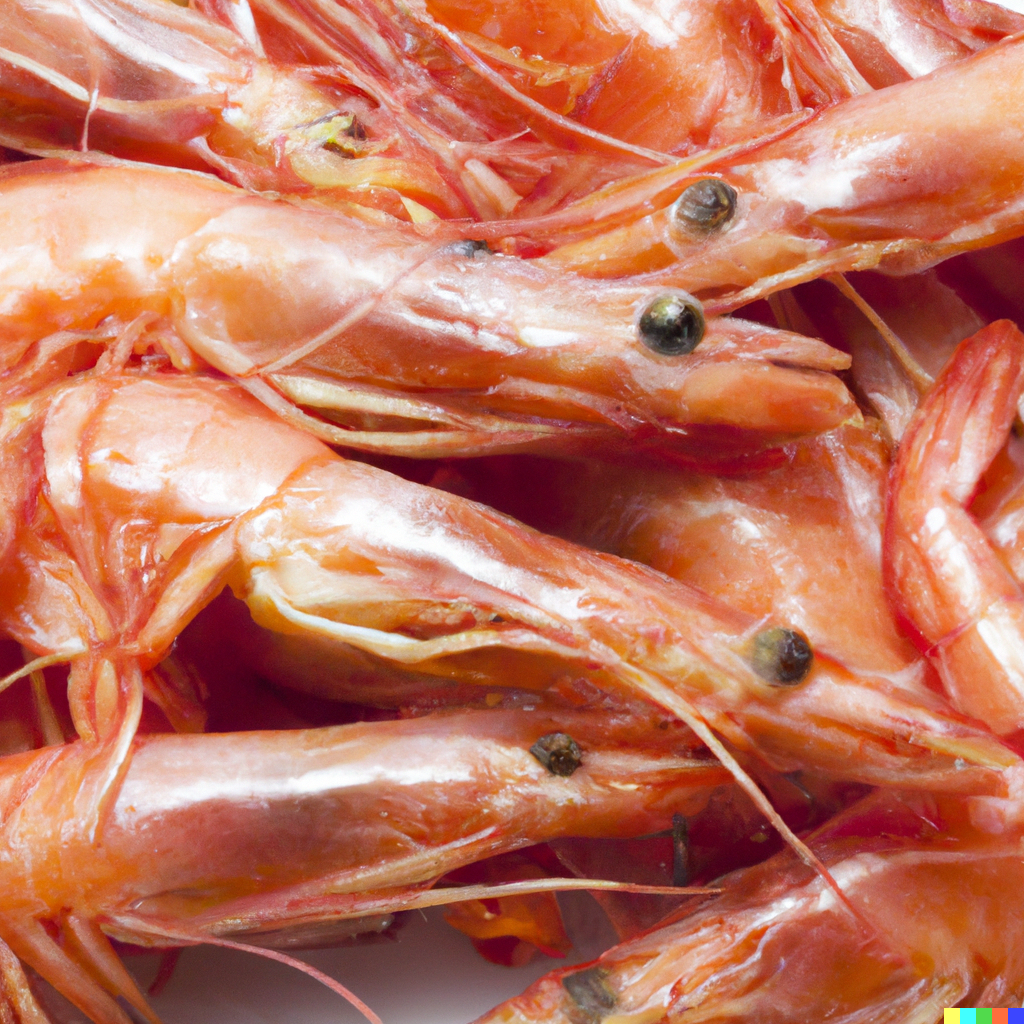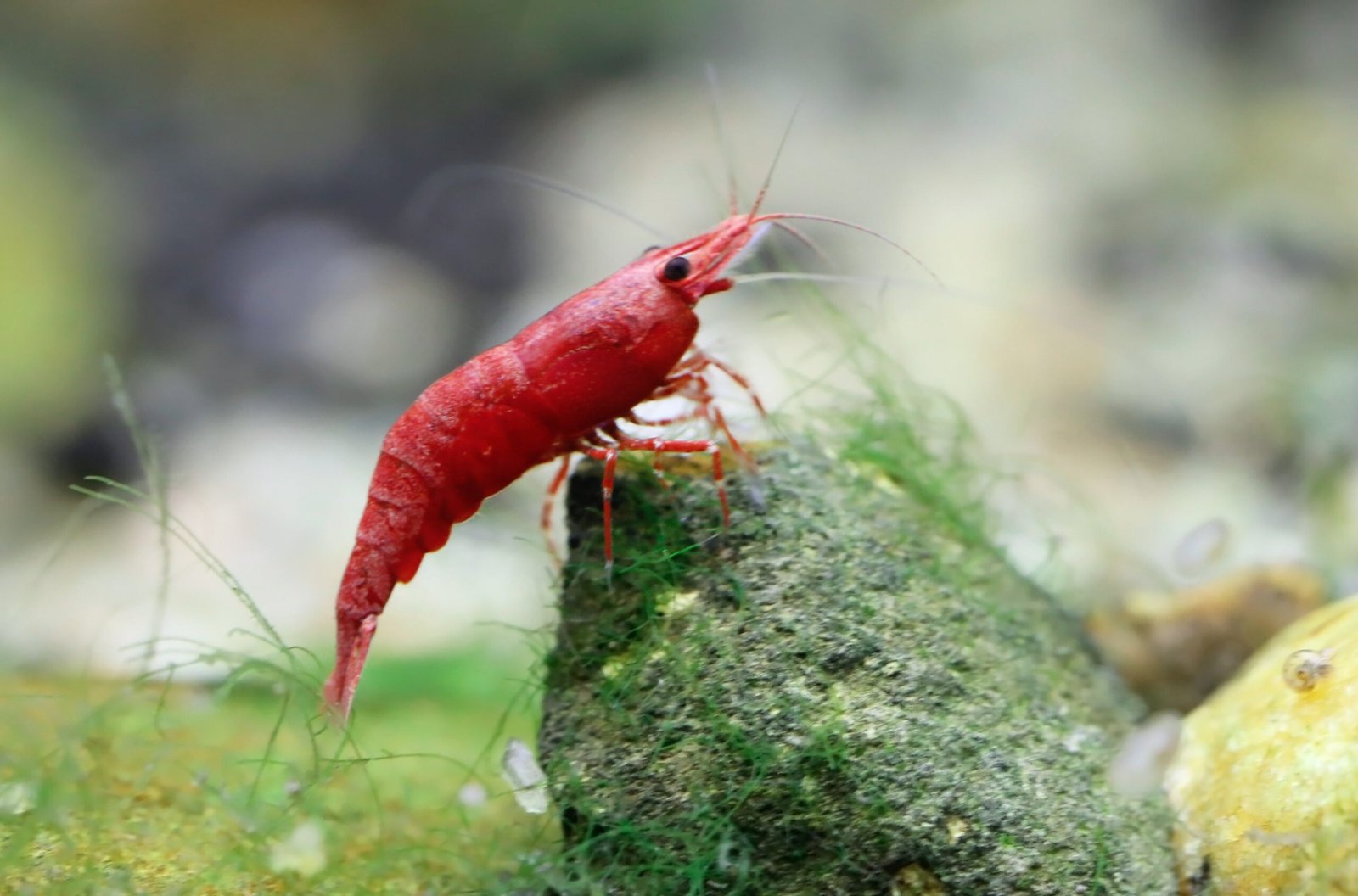Red Green Shrimp can suffer from bacterial infections and poor water quality. Overfeeding also leads to health issues.
Red Green Shrimp, also known as Neocaridina heteropoda, are popular in aquariums due to their vibrant colors and ease of care. These freshwater shrimp thrive in well-maintained tanks with stable water parameters. Regular monitoring of water quality is crucial for their health.
Feeding them a balanced diet prevents nutritional deficiencies and overfeeding, which can cause digestive problems. Shrimp owners should be vigilant for signs of disease, such as lethargy or discoloration. Quarantining new shrimp before adding them to the tank reduces the risk of introducing pathogens. Proper care ensures these shrimp remain healthy and vibrant, enhancing the beauty of any aquarium.
Common Health Issues
Red Green Shrimp are fascinating pets for many aquarists. They are vibrant and fun to watch. But, like all pets, they can face health issues. Knowing the common problems helps in keeping them healthy. Here are some common health issues that Red Green Shrimp may face.
Bacterial Infections
Bacterial infections are quite common in Red Green Shrimp. Symptoms include a loss of color and lethargy. You may also notice white spots on their bodies. These infections can spread quickly. They often result from poor water quality or stress.
To treat bacterial infections, use a broad-spectrum antibiotic. Ensure the water is clean and has the right parameters. Regular water changes help prevent bacterial infections.
Fungal Diseases
Fungal diseases are another common issue. These often show up as white, cotton-like growths on the shrimp. Fungal infections are usually a result of injuries or poor tank conditions. They can make your shrimp very sick if not treated.
Treatment involves isolating the infected shrimp and using an antifungal medication. Improve tank hygiene to prevent fungal diseases. Regularly check for any signs of injuries on the shrimp.
Parasitic Infestations
Parasitic infestations are also a concern. These can cause swimming problems and weight loss. You might see small worms or parasites on the shrimp. These infestations can spread to other tank inhabitants.
To deal with parasites, use a parasitic treatment specific for shrimp. Quarantine any new shrimp before adding them to the tank. This step helps in preventing the spread of parasites.
| Health Issue | Symptoms | Prevention | Treatment |
|---|---|---|---|
| Bacterial Infections | Loss of color, lethargy, white spots | Clean water, less stress | Broad-spectrum antibiotic |
| Fungal Diseases | White, cotton-like growths | Good tank hygiene | Antifungal medication |
| Parasitic Infestations | Swimming problems, weight loss | Quarantine new shrimp | Parasitic treatment |
Symptoms To Watch For
Monitoring the health of your red and green shrimp is crucial. Identifying symptoms early can save your shrimp. Here are key symptoms to watch for:
Discoloration
Healthy shrimp have vibrant colors. If you notice dull or pale colors, this can indicate a problem. Look for any sudden color changes. Yellow spots or patches are also concerning.
Here is a quick guide:
| Symptom | Possible Cause |
|---|---|
| Dull Colors | Stress or Poor Water Quality |
| Yellow Spots | Bacterial Infection |
| Pale Color | Lack of Nutrition |
Unusual Behavior
Watch for shrimp that are less active. If they hide more than usual, this may be a sign of stress. Shrimp that refuse to eat are also a concern.
- Less activity
- Hiding more
- Refusing to eat
Physical Deformities
Check for any physical deformities. Bent or missing limbs are serious signs. Swollen or cloudy eyes also indicate health issues.
- Bent limbs
- Missing limbs
- Swollen eyes
- Cloudy eyes
Quick action can save your shrimp. Always keep an eye on their appearance and behavior.
Preventive Measures
Maintaining the health of your Red Green Shrimp is crucial. Following preventive measures can help keep your shrimp healthy and thriving. These measures focus on tank maintenance, water quality, and diet.
Proper Tank Maintenance
Regular tank maintenance is essential. A clean tank prevents diseases and stress.
- Clean the tank once a week.
- Remove uneaten food and waste.
- Check for algae growth and clean as needed.
Proper tank size also matters. Ensure the tank is big enough for your shrimp. Crowded tanks lead to stress and health problems.
Quality Water Parameters
Water quality is vital for shrimp health. Monitor water parameters regularly.
| Parameter | Ideal Range |
|---|---|
| Temperature | 72-78°F |
| pH | 6.5-7.5 |
| Ammonia | 0 ppm |
| Nitrate | Less than 20 ppm |
Regularly test the water. Make adjustments as needed. Stable water parameters prevent stress and diseases.
Balanced Diet
A balanced diet keeps shrimp healthy. Provide a variety of foods.
- Algae wafers
- Blanched vegetables
- Specialized shrimp pellets
Avoid overfeeding. Excess food leads to poor water quality. Feed your shrimp sparingly to maintain water quality.
Supplements can also help. Calcium-rich foods support shell health. Strong shells are important for overall health.

Credit: www.primaverakitchen.com
Effective Treatments
Red Green Shrimp are delicate creatures. They need proper care to stay healthy. If they get sick, effective treatments are necessary. Let’s explore some options to help them recover.
Medications
Medications can help treat various health problems in Red Green Shrimp.
- Antibiotics: These treat bacterial infections. Use them carefully.
- Antifungals: These help with fungal infections.
- Anti-parasitic: These are used for parasite issues.
Always follow the dosage instructions. Overuse can harm the shrimp.
Natural Remedies
Natural remedies are a gentle way to treat shrimp health issues.
- Indian Almond Leaves: These release tannins. Tannins have antibacterial properties.
- Garlic: Garlic boosts the shrimp’s immune system.
- Salt Baths: Salt can eliminate parasites.
These remedies are safer. They are less likely to cause side effects.
Quarantine Procedures
Quarantining sick shrimp can prevent the spread of disease.
- Separate Tank: Set up a separate tank for the sick shrimp.
- Water Quality: Maintain good water quality in the quarantine tank.
- Observation: Monitor the shrimp closely for changes.
Quarantine helps protect the healthy shrimp in your main tank.
Water Quality Management
Maintaining optimal water quality is essential for the health of Red Green Shrimp. Poor water conditions can lead to stress and diseases. Effective water quality management involves proper filtration, regular water changes, and testing kits.
Filtration Systems
A good filtration system is crucial for Red Green Shrimp health. It removes waste, uneaten food, and harmful chemicals. Choose a filter that suits the tank size and shrimp population. Sponge filters are popular because they are gentle and effective.
- Mechanical Filtration: Removes physical debris.
- Biological Filtration: Breaks down harmful ammonia.
- Chemical Filtration: Removes toxins and impurities.
Regular Water Changes
Performing regular water changes keeps the tank environment stable. Change 10-20% of the water weekly. This prevents the build-up of harmful substances. Use dechlorinated water to avoid harming the shrimp.
- Remove old water.
- Add dechlorinated water.
- Ensure water temperature matches the tank.
Testing Kits
Use testing kits to monitor water parameters. Test for ammonia, nitrite, nitrate, and pH levels. Ideal levels are:
| Parameter | Ideal Level |
|---|---|
| Ammonia | 0 ppm |
| Nitrite | 0 ppm |
| Nitrate | Below 20 ppm |
| pH | 6.5 – 7.5 |
Testing regularly helps detect issues early. Take corrective actions to maintain water quality.

Credit: globalseafoods.com
Diet And Nutrition
Proper diet and nutrition are crucial for the health of Red Green Shrimp. A balanced diet keeps them active, colorful, and healthy. Let’s explore some key aspects of their diet and nutrition.
Nutritious Food Options
Providing a variety of foods is essential. Red Green Shrimp benefit from:
- Algae: A natural and primary food source.
- Blanched Vegetables: Spinach, zucchini, and peas are great choices.
- Specialized Shrimp Food: High-quality pellets or flakes designed for shrimp.
- Biofilm: Grows naturally in the tank and is a vital food source.
These foods ensure they get all the needed nutrients.
Feeding Schedules
Maintaining a proper feeding schedule is important. Overfeeding can cause health problems. Here’s a simple schedule:
| Day | Food Type |
|---|---|
| Monday | Algae |
| Tuesday | Blanched Vegetables |
| Wednesday | Specialized Shrimp Food |
| Thursday | Biofilm |
| Friday | Blanched Vegetables |
| Saturday | Specialized Shrimp Food |
| Sunday | Biofilm |
Feed small amounts once or twice daily.
Supplements
Sometimes, diet alone isn’t enough. Supplements can help. Consider:
- Calcium Supplements: Essential for shell health.
- Vitamins: Boosts overall health and color.
Always choose high-quality supplements designed for shrimp.
Stress Reduction
Stress can severely impact the health of Red Green Shrimp. Reducing stress helps them thrive and stay healthy. Here are some key ways to ensure your shrimp feel secure and stress-free in their environment.
Suitable Tankmates
Choosing the right tankmates is crucial. Red Green Shrimp are peaceful and need calm companions.
- Avoid aggressive fish like cichlids.
- Good tankmates include small tetras and snails.
- Avoid large fish that may eat shrimp.
Proper Tank Size
The tank size plays a significant role in reducing stress. Adequate space allows shrimp to move freely and feel less crowded.
- Minimum tank size: 10 gallons.
- Larger tanks allow better water quality and more space.
- Overcrowding can cause stress and health issues.
Hiding Places
Providing hiding places can significantly reduce stress. Shrimp need places to hide and feel safe.
- Add plants like Java moss and Anubias.
- Use decorations such as caves and driftwood.
- Create shaded areas with floating plants.
Below is a table summarizing important points:
| Aspect | Details |
|---|---|
| Suitable Tankmates | Small tetras, snails, avoid aggressive fish |
| Proper Tank Size | Minimum 10 gallons, larger tanks better |
| Hiding Places | Plants, caves, driftwood, shaded areas |
Monitoring And Observation
Red Green Shrimp are delicate creatures. Keeping them healthy requires careful monitoring and observation. Regular checks help catch issues early. This section covers essential steps for keeping your shrimp healthy.
Regular Health Checks
Perform regular health checks on your Red Green Shrimp. Look at their color, body, and behavior. Healthy shrimp have bright colors and active movement. Check for signs of disease or stress.
| Health Indicator | What to Look For |
|---|---|
| Color | Bright and vibrant hues |
| Body | Clear shell, no spots or lesions |
| Movement | Active and quick |
Behavior Tracking
Track the behavior of your shrimp. Normal shrimp are active and curious. They move around the tank a lot. If they hide or move slowly, this is a concern.
- Active swimming
- Exploring the tank
- Feeding regularly
Behavior changes can signal health problems. Always keep an eye on how they act.
Early Intervention
Early intervention is key. If you spot issues, act fast. Isolate sick shrimp to prevent spreading. Treat with appropriate medication if needed.
- Identify the issue
- Isolate affected shrimp
- Administer treatment
Quick action can save your shrimp. Always monitor their health closely.

Credit: www.runningtothekitchen.com
Frequently Asked Questions
Are Red Shrimp Healthy?
Yes, red shrimp are healthy. They are rich in protein, vitamins, and minerals. They also contain omega-3 fatty acids.
How To Treat Green Fungus Shrimp?
Treat green fungus shrimp by isolating the infected shrimp. Use antifungal treatments and improve water quality. Maintain a clean tank.
What Is The Milk Disease In Shrimp?
Milk disease in shrimp, also known as white muscle disease, is caused by the bacteria Vibrio harveyi. This disease results in white, opaque muscle tissue and can lead to high mortality rates. Maintaining good water quality and proper shrimp management can help prevent it.
Do Shrimp Carry Diseases?
Yes, shrimp can carry diseases like White Spot Syndrome and Early Mortality Syndrome. Proper handling and cooking reduce risks.
Conclusion
Understanding red green shrimp health problems is crucial for maintaining a healthy aquarium. Regular monitoring and proper care can prevent many issues. Always research and consult experts for the best advice. Prioritize the well-being of your shrimp to enjoy a vibrant and thriving tank.
